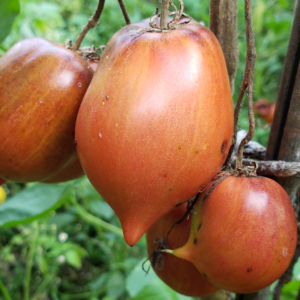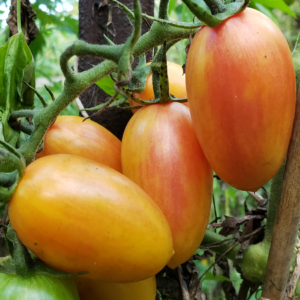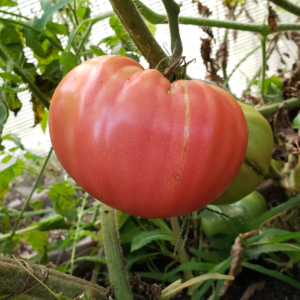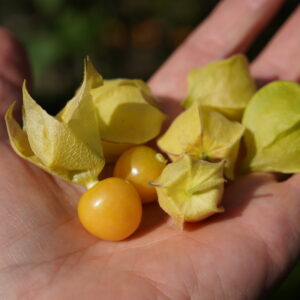Heirloom Seeds
Pawpaw
Latin Name:
Asimina trilobaA small deciduous tree native to the eastern United States and Canada, producing a large, yellowish-green to brown fruit. Paw Paw belongs to the genus Asimina in the same plant family (the Annonaceae) as the custard-apple, cherimoya, sweetsop, ylang-ylang, and soursop.
A small deciduous tree native to the eastern United States and Canada, producing a large, yellowish-green to brown fruit. Pawpaw belongs to the genus Asimina in the same plant family (the Annonaceae) as the custard-apple, cherimoya, sweetsop, ylang-ylang, and soursop.
The pawpaw is a patch-forming (clonal) understory tree found in well-drained, deep, fertile bottom-land and hilly upland habitat, with large, simple leaves. Pawpaw fruits are the largest edible fruit indigenous to the United States (not counting gourds, which are typically considered vegetables rather than fruit for culinary purposes, although in botany they are classified as a fruit).
Pawpaw fruits have a sweet, custard-ish flavor somewhat similar to a banana, mango, and cantaloupe, and are commonly eaten raw, but are also used to make ice cream and baked desserts.
Pawpaws grow in the forest understory beneath much larger trees. Pawpaws are sky high in vitamin C, magnesium, iron, copper, and manganese. They are also a good source of potassium and several essential amino acids, and they also contain significant amounts of riboflavin, niacin, calcium, phosphorus, and zinc.
Additional information
| Germination | Germination: Planting Your Pawpaw Seeds: Pawpaw seeds must never dry out or dehydrate. This kills the seed. Remove your fresh seeds from the bag and plant immediately, or leave in the bag with moist material until ready. Plant seeds under 1 inch of potting soil in containers and keep consistently moist (but not soaking wet), warm and dark. Potting mix should be very light and fluffy with perlite or similar material. Seeds first sprout and grow roots, then the tops show. Expect tops to show in about 3-6 weeks from planting. Remember to keep moist and out of freezing temperatures. Seeds can also be direct-sown in May outside in prepared seed beds or holes. Fertilize from April-July with a balanced organic fertilizer and keep roots mulched, moist but not wet. Pawpaws should start fruiting from seed in about 4-6 years depending on care given and rate of growth. |
|---|






Reviews
There are no reviews yet.